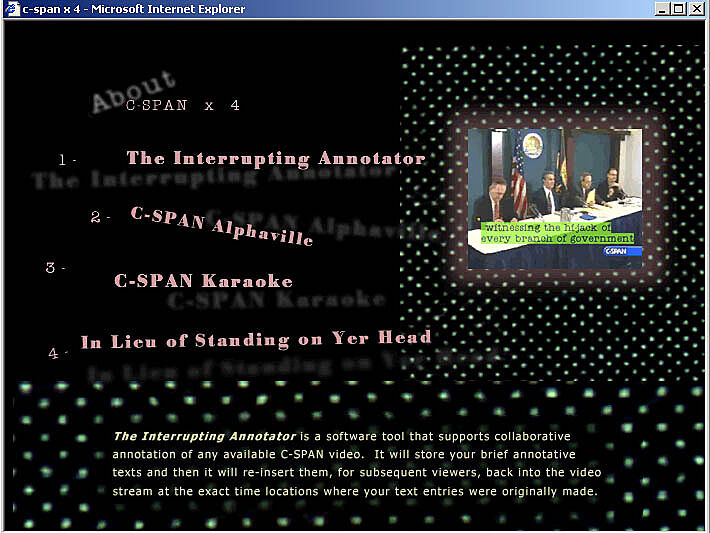Programmed: Rules, Codes, and Choreographies in Art, 1965–2018 | Art & Artists
Sept 28, 2018–Apr 14, 2019
Programmed: Rules, Codes, and Choreographies in Art, 1965–2018 | Art & Artists
Signal, Sequence, Resolution:
Image Resequenced
4
Several of the “programmed” works here reflect on how rules and code are used to rearrange images. Nam June Paik’s massive wall of televisions, Fin de Siècle II, for example, choreographs music videos and “dissolves” the television program into combinations of dancing patterns, providing a different framework to understand broadcasting. Other works resequence images while engaging with such varied subject matter as image processing, interactive storytelling, and political commentary. Steina’s multichannel video installation Mynd investigates the aesthetic effects of software processing, while Lynn Hershman Leeson’s interactive installation Lorna prompts visitors to navigate a branching narrative with multiple endings and the two works from Barbara Lattanzi’s series C-Span x 4 annotate news reportage with subtitles borrowed from a political sci-fi film or karaoke-format song lyrics.
Barbara Lattanzi, C-SPAN Karaoke, C-SPAN Alphaville (from C-SPAN x 4 series), 2005
Barbara Lattanzi created C-SPAN x 4 as a series of four online software tools that allowed visitors to the website of the Cable-Satellite Public Affairs Network (C-SPAN) to select video clips and manipulate and remix them. Since the original software is not functional anymore, two of the tools—C-SPAN Karaoke and C-SPAN Alphaville—are documented here through screen captures. In C-SPAN Alphaville, the video clips are subtitled with dialogue from the English-language version of Jean-Luc Godard’s 1965 film Alphaville, in which a dystopian society is controlled by a central computer. C-SPAN Karaoke overlays prerecorded tracks from a karaoke machine onto selected videos, inviting people to sing along. Although humorous, these annotations nonetheless raise serious questions about authority and projections of state power within the online media environment.
Watch video demos for C-SPAN Karaoke and C-SPAN Alphaville (from C-SPAN x 4 series) on the Whitney’s artport site.
Artists
- Josef Albers
- Cory Arcangel
- Tauba Auerbach
- Jonah Brucker-Cohen
- Jim Campbell
- Ian Cheng
- Lucinda Childs
- Charles Csuri
- Agnes Denes
- Alex Dodge
- Charles Gaines
- Philip Glass
- Frederick Hammersley
- Channa Horwitz
- Donald Judd
- Joseph Kosuth
- Shigeko Kubota
- Marc Lafia
- Barbara Lattanzi
- Lynn Hershman Leeson
- Sol LeWitt
- Fang-yu Lin
- Manfred Mohr
- Katherine Moriwaki
- Mendi + Keith Obadike
- Nam June Paik
- William Bradford Paley
- Paul Pfeiffer
- Casey Reas
- Earl Reiback
- Rafaël Rozendaal
- Lillian Schwartz
- James L. Seawright
- John F. Simon Jr.
- Steina
- Mika Tajima
- Tamiko Thiel
- Cheyney Thompson
- Joan Truckenbrod
- Siebren Versteeg
- Lawrence Weiner

